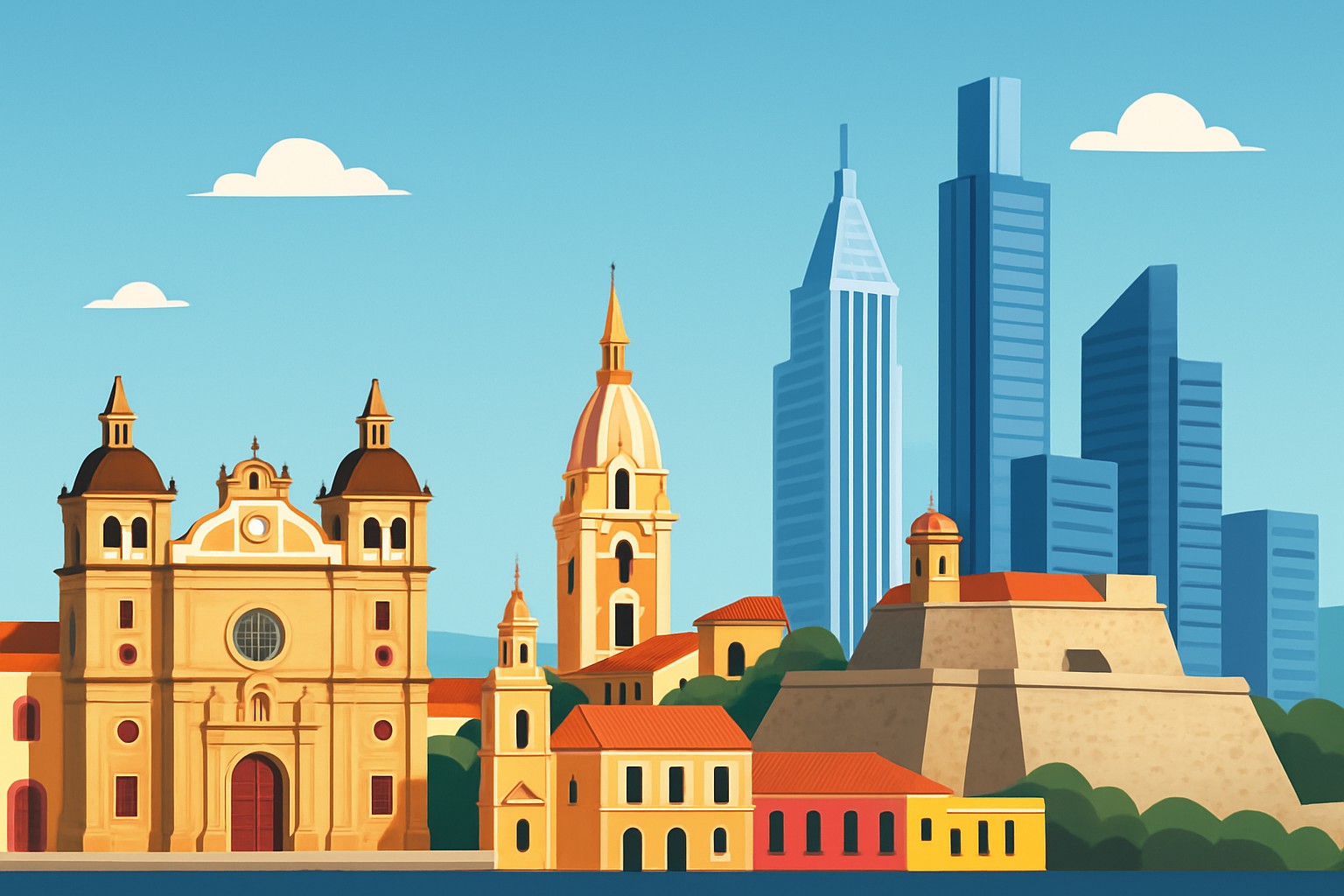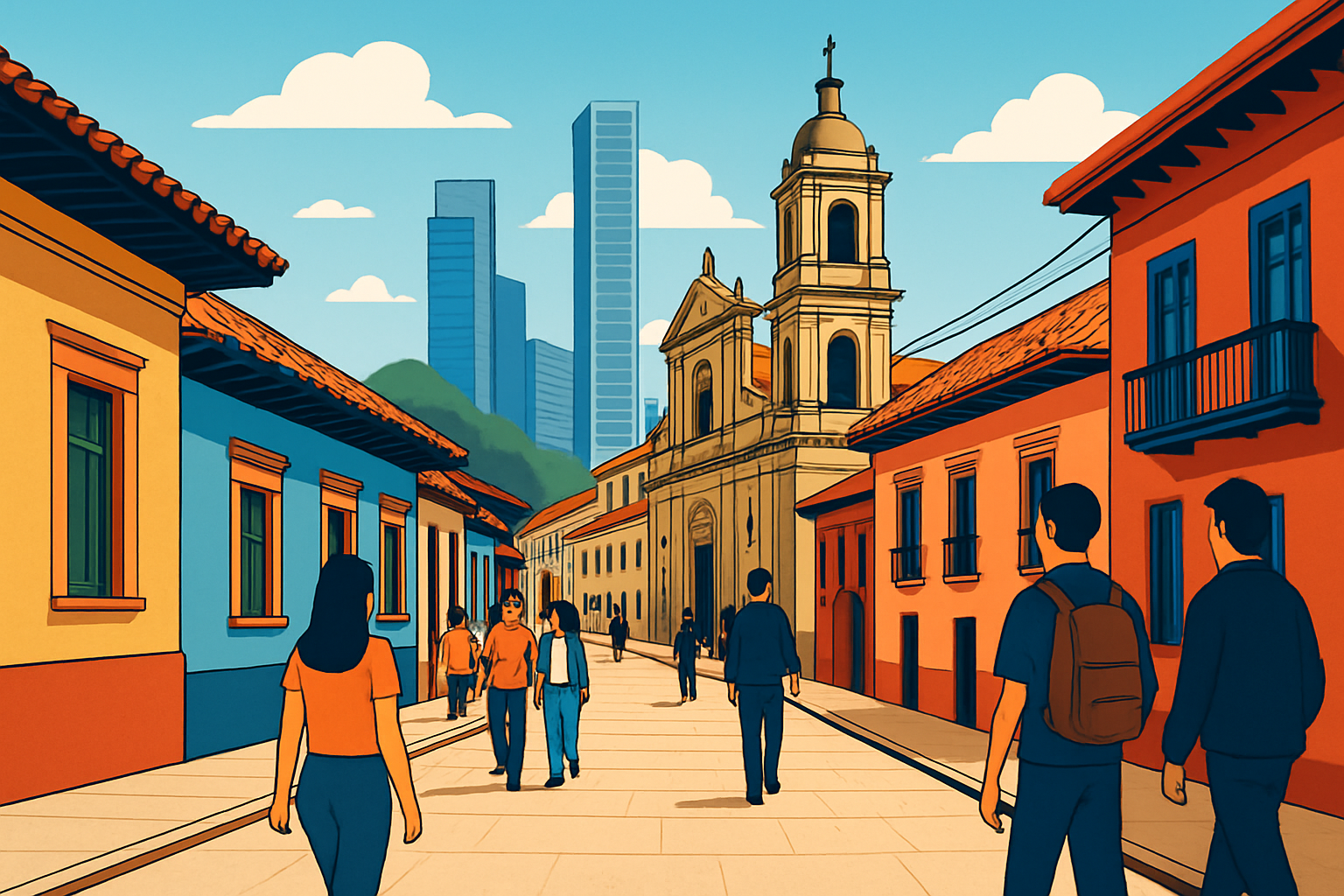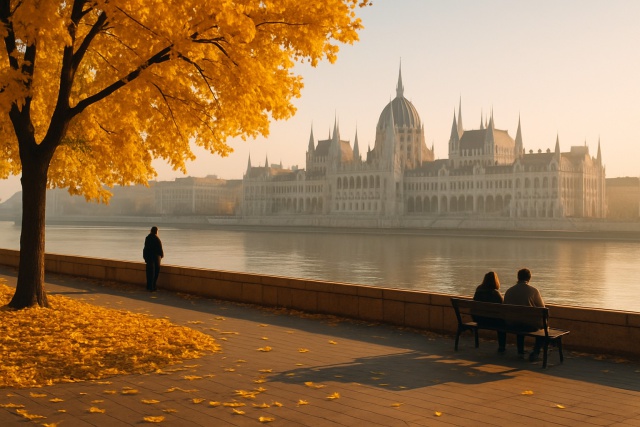Famous Buildings in Colombia You Should See in Person

Colombia boasts a rich architectural heritage that’s like a living tapestry woven from its diverse history and culture, showcased in its famous buildings in Colombia. From awe-inspiring colonial cathedrals that whisper tales of old to bold, innovative modernist buildings, the country’s iconic structures are storytellers in their own right. They share chapters of conquest, independence and cultural evolution.
A Closer Look at Colombia's Architecture and Its Story
Colombia's architecture is a fascinating patchwork quilt weaving together colonial, republican, modernist, contemporary and indigenous styles. Each style unfolds its own tale reflecting distinct historical chapters, regional quirks and cultural nuances.
- Colonial style proudly shows its Spanish roots, especially in the intricately detailed churches and bustling plazas that tell stories of the past
- Republican style introduces a neoclassical elegance developed after independence and gives buildings a refined, dignified feel
- Modernist architecture reflects the restless spirit of the 20th century by driving urban areas forward with bold designs
- Contemporary architecture aims to be cutting-edge while caring deeply about sustainability and blending innovation with a thoughtful approach to the environment
- Indigenous influences subtly appear in the use of local materials and rich symbolic motifs that add depth and character
- Colombia's architectural landscape resembles a vivid tapestry that contrasts the grandeur of its urban centers with the charming simplicity of the countryside
Some of Colombia's Most Iconic Buildings: Famous Buildings in Colombia You Just Can’t Miss
Colombia is home to a treasure trove of architectural masterpieces that beautifully reflect both its colorful history and vibrant modern life. These iconic buildings are not just eye candy. They attract millions of visitors every year and stand proudly as cultural landmarks with unique stories shaped by design, history and setting.
1. Catedral Primada de Colombia (Bogotá)
Nestled in the heart of Bogotá, the Catedral Primada de Colombia isn’t just any old building; it’s a grand old dame of history and architecture that has stood tall through centuries. If walls could talk, this cathedral's stories would probably rival your favorite novel, filled with vivid chapters of colonial charm, spiritual devotion, and a dash of local flavor. Whether you’re an architecture buff or someone who simply appreciates a good backdrop for people-watching, this iconic cathedral delivers with its stunning façade and atmosphere that somehow feels both solemn and welcoming.
The Catedral Primada de Colombia is nestled in Bogotá's La Candelaria district and proudly flaunts colonial baroque architecture with a striking façade and detailed interior. Constructed over several centuries from the 16th to the 19th, this cathedral is a living tapestry of Colombia's religious and political journey. Many visitors are captivated by its grand altars, stunning religious artworks and the serene atmosphere that fills this venerable sanctuary.
2. Torre Colpatria (Bogotá) standing tall and proud in the heart of the city
Torre Colpatria truly stands out as a shining symbol of Colombia’s rapid modernization and bustling economic progress. Once crowned the tallest building in the country, this 50-story skyscraper has a sleek modern design. It is famous for its nightly light shows that jazz up the Bogotá skyline in a delightful way. Its observation deck offers sweeping views of the city, especially breathtaking at sunset when the sky puts on its own kind of spectacle.
3. Castillo de San Felipe de Barajas in Cartagena
If walls could talk, the Castillo de San Felipe de Barajas would have some seriously adventurous stories to tell. Perched on a hill with a commanding view of Cartagena, this fortress is not just a pretty face; it is a living testament to the city's turbulent past. Built by the Spanish during the colonial era, its maze-like tunnels and thick stone ramparts were designed to keep invaders at bay and they did their job pretty well, too. Walking through its corridors, you can almost hear the echoes of old battles and imagine the strategizing that went on behind those sturdy walls. It’s a must-see for history buffs or anyone who loves a good story etched in stone.
Perched atop a hill overlooking Cartagena the Castillo de San Felipe de Barajas stands as a striking testament to colonial military ingenuity. Built by the Spanish in the 17th century this fortress played a key role in fending off pirates and foreign invaders alike. Its twisting tunnels and hefty walls whisper tales of grit and resilience along with some seriously clever tactics.
4. Museo del Oro (Bogotá)
If you ever find yourself wandering the busy streets of Bogotá, a stop at the Museo del Oro is an absolute must. It’s not just a museum; it’s a dazzling treasure trove that showcases Colombia’s rich heritage through thousands of gleaming gold artifacts. Honestly, it’s the kind of place where you might lose track of time, mesmerized by the craftsmanship and stories each piece holds. Whether you’re a history buff or just someone who appreciates shiny things, this spot has a little magic for everyone.
The Museo del Oro stands out with its sleek modernist architecture and an intriguing underground layout that feels like stepping into a hidden treasure trove. Inside, you will find what many consider the world’s largest collection of pre-Hispanic gold artifacts. It is a true bridge between Colombia’s rich indigenous heritage and its vibrant cultural scene today. Visitors dive into interactive exhibits and marvel at dazzling golden pieces that highlight masterful craftsmanship and carry a profound spiritual story.
5. La Catedral de Sal (Zipaquirá) A Marvel Carved in Salt
La Catedral de Sal is nothing short of awe-inspiring—an underground salt cathedral carved into the tunnels of an old salt mine near Zipaquirá. This remarkable spot blends natural geology with deep spiritual meaning and offers a unique experience as visitors descend into vast chambers bathed in soft light. Inside, you’ll find religious sculptures, detailed altars and wide-open spaces that invite a quiet contemplative mood.
6. Quinta de San Pedro Alejandrino (Santa Marta)
Sometimes, history quietly settles into a place like Quinta de San Pedro Alejandrino, nestled in Santa Marta. This is not just any old colonial hacienda; it is where the legendary Simón Bolívar spent his final days. Walking through its grounds, you cannot help but feel the weight of those last moments—it's as if the walls themselves whisper stories of a bygone era. If you ever find yourself there, take a moment to soak it all in; it’s more than a visit, it’s a connection to history that sticks with you.
The Quinta de San Pedro Alejandrino is a historic hacienda where Simón Bolívar, the liberator of South America, spent his final days. This charming colonial estate blends Spanish and Caribbean architectural styles and boasts lush gardens, crisp whitewashed walls and inviting traditional courtyards. Nowadays it serves as a museum complex paying heartfelt tribute to Bolívar’s enduring legacy and Colombia’s hard-fought battle for independence. Visitors are free to wander through the carefully preserved rooms, amble along the botanical gardens and soak in the exhibitions.
7. Biblioteca Virgilio Barco in Bogotá a true gem tucked away in the hustle and bustle of the city, where every corner invites you to lose yourself in a world of stories.
Crafted by the renowned Colombian architect Rogelio Salmona, the Biblioteca Virgilio Barco shines as a standout example of modern architecture known for its open spaces and abundant natural light along with signature red brick facades. The design feels like it was meant to cozy up with the surrounding park and create a calm cultural haven in the heart of Bogotá. Serving not just as a public library but also as a lively cultural center, it warmly invites visitors to dive into learning and art within a space that reflects thoughtful architectural harmony.
Planning Your Visits to Colombia's Most Iconic Buildings with a Handy Guide to Making Every Moment Count
Planning an architectural tour in Colombia is about finding the right balance between timing and local customs plus travel details. Zeroing in on key cities and checking access requirements can save you from hiccups. Guided tours often bring rich historical stories you might miss otherwise.
Kick off your itinerary by diving into major cities like Bogotá, Cartagena and Santa Marta where Colombia’s most iconic buildings really show off their charm.
Make sure to double-check opening hours and whether you need any permits or tickets beforehand to avoid last-minute surprises.
Whenever possible, book guided tours because they often reveal fascinating stories behind the architectural styles that you’d otherwise miss.
Mix up your landmark visits with cultural experiences such as savoring local dishes, popping into museums or catching a festival nearby to really soak it all in.
If you can swing it, aim to travel during the dry season which typically runs from December to March when the weather tends to be more reliable.
Getting around is a breeze when you use local transportation options like buses or taxis. Renting a car can also help you hop between sites without breaking a sweat.
Tips to Truly Savor Colombian Architecture Up Close
To soak in Colombia's architectural gems it is best to bring all your senses along and come a little prepared. Picking up some history beforehand, snapping photos thoughtfully and showing love for preservation efforts can add layers to your experience.
- Take a moment to soak in the fine architectural details and craftsmanship up close. It’s the kind of skill that makes you stop and marvel.
- Dig a little into the historical and cultural background of each building before you show up because it adds so much flavor to the whole experience.
- Chat with local guides or architecture buffs as they often share tidbits that you won’t find in any brochure and somehow make the story come alive.
- Swing by the buildings at different times of day to catch how the light plays tricks on their atmosphere. It’s worth the extra effort.
- Always stick to preservation guidelines and tread carefully so those delicate historical gems stay safe for future visitors.
- Lace up some comfy, sturdy shoes since older buildings tend to have uneven floors and quirky steps that can trip you up if you’re not paying attention.

Beyond Buildings A Closer Look at How Colombia's Architecture Shapes Life Today
Colombia’s architectural heritage, embodied in its famous buildings in Colombia, continues to spark inspiration in today’s design and city planning like an old friend who never loses their charm. New architects often blend traditional patterns with sustainable materials while trying to juggle modern needs without losing that historic spark. Meanwhile, preservation efforts work hard behind the scenes to shield those treasured historic sites from the relentless push of urban growth.
"Protecting Colombia’s historic buildings isn’t just about preserving our architectural heritage; it’s about keeping a conversation going between the past and the future. It inspires designers to honor tradition while daring to push the envelope in their own creative ways." — María Fernanda Ríos, Colombian architect and cultural advocate





